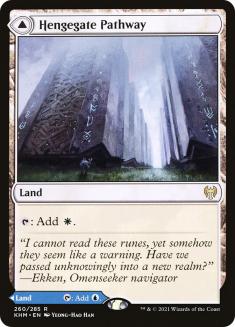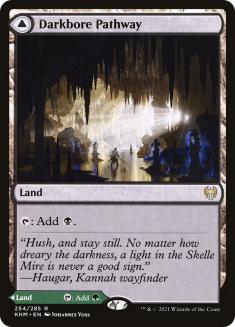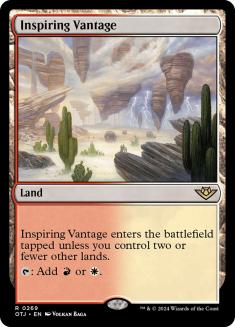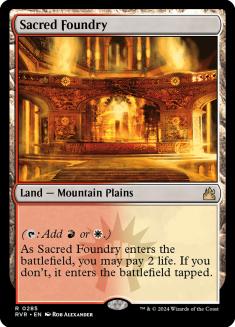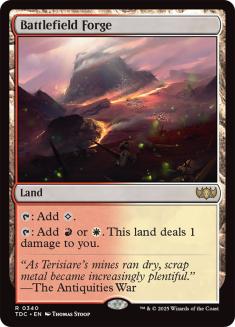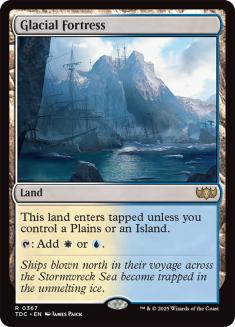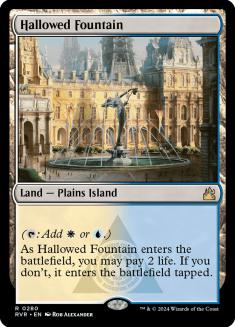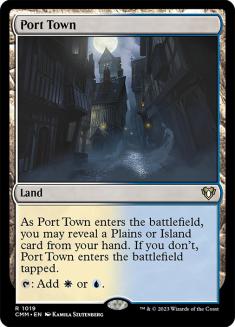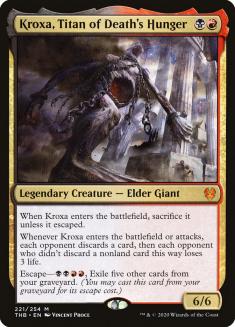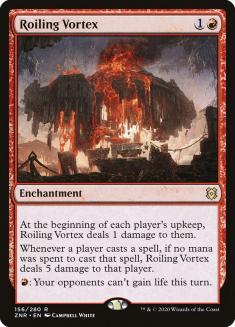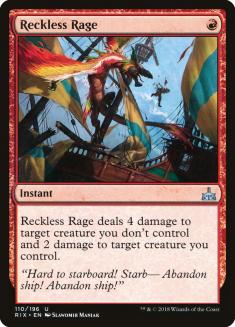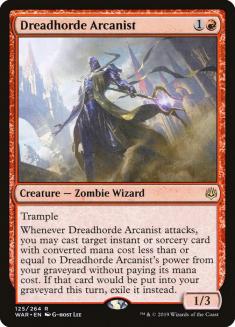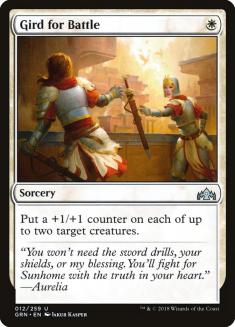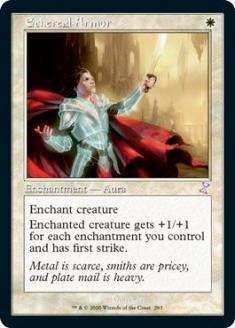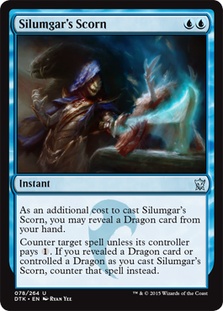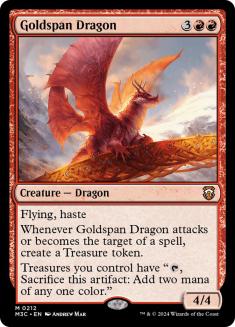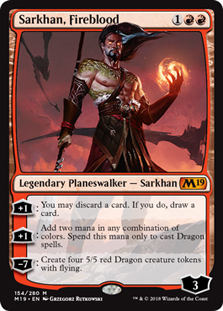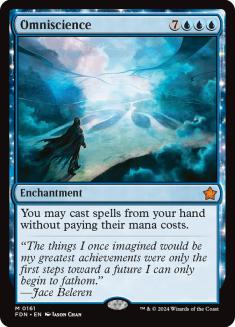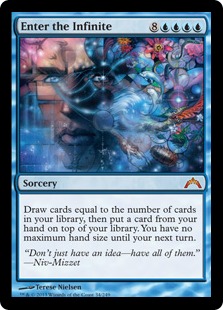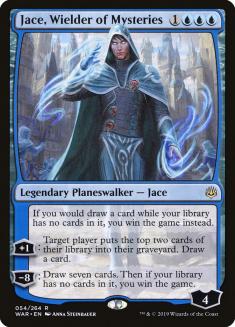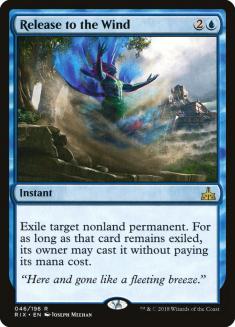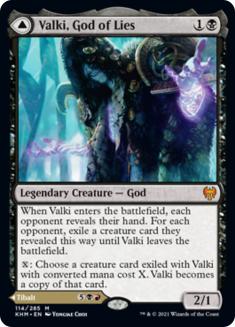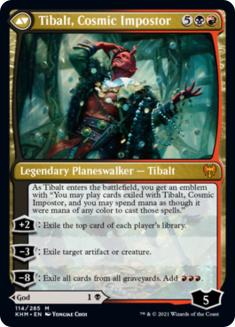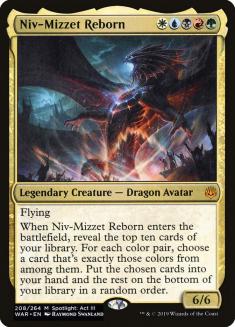Pour one out for Pioneer, a much-maligned and misunderstood format. With the pandemic stopping its momentum in paper play and the format taking a hard turn towards combo thanks to Theros Beyond Death, interest in Pioneer quickly dried up. The long-overdue round of bans that aimed to address this not only misfired but was undermined when Zendikar Rising brought a new wave of combo decks and the same Omnath, Locus of Creation ramp shells that also dominated every other format. Other Standard menaces like Fires of Invention; Wilderness Reclamation; and Teferi, Time Raveler remained legal and obnoxious.
Despite this, Pioneer was quietly one of the healthier and more diverse formats — however low that bar was. With some of the worst offenders removed, Pioneer’s long winter is finally over just as Kaldheim’s is beginning.
The first wave of tournament results confirms what we always knew: formats are defined by their mana.
An enduring feature — or rather a bug — of Pioneer was the uneven quality of mana fixing. Thanks to the staggered release and reprinting of dual land cycles, enemy colours enjoyed fixing that was stronger and more plentiful than the meager scraps afforded to the allied colours:
Decks like Boros Wizards (Lurrus) or Orzhov Auras (Lurrus) had access to a dozen good duals that could cast spells of either colour on Turn 1. Gruul or Rakdos Aggro can only count on their respective Ravnica shockland — the Port Town cycle, rightfully mocked throughout its time in Standard, was awful in the mid-game and introduced a tension with fixing like Glacial Fortress that lacked basic land types. Desperate deckbuilders had to turn to Mana Confluence, a massive liability in a format full of other aggro decks with much cleaner mana. The completion of the Pathway cycle allows proactive strategies in any colour pair to flourish:
Creatures (34)
- 4 Rattlechains
- 4 Spell Queller
- 2 Selfless Spirit
- 4 Mausoleum Wanderer
- 4 Supreme Phantom
- 4 Empyrean Eagle
- 4 Spectral Sailor
- 4 Watcher of the Spheres
- 4 Shacklegeist
Lands (22)
Spells (4)

Azorius Spirits received several welcome upgrades last year — Watcher of the Spheres as the strongest two-drop in the deck and Lofty Denial as a Mana Leak other blue decks could only dream of — but Hengegate Pathway may be the most important. Spirits fits the traditional model of a tribal aggro deck in which your creatures key off each other, so being able to curve out consistently is even more important than in a generic aggro deck.
Default anti-aggro measures are much less effective against Azorius Spirits; large creatures without flying or reach don’t matter and sweepers are easily gobbled up by Lofty Denial and Spell Queller or neutralized by Selfless Spirit. This is the toughest aggro deck to play optimally against even if you do have the right tools. Spirits can play a proactive and reactive game at the same time, with open mana representing a wide range of possible cards. Teferi, Time Raveler, the scariest card out of any midrange or control deck, is safely behind bars now.
Pathways also make three-colour decks functional:
Creatures (33)
- 4 Llanowar Elves
- 4 Burning-Tree Emissary
- 4 Voice of Resurgence
- 4 Elvish Mystic
- 2 Goblin Rabblemaster
- 2 Pia and Kiran Nalaar
- 2 Thopter Engineer
- 4 Angrath's Marauders
- 2 Legion Warboss
- 1 Kenrith, the Returned King
- 4 Winota, Joiner of Forces
Lands (22)
Spells (5)

Christmas came early for Naya Winota as it picked up a full set of Pathways in Zendikar Rising. Before that, Naya Winota was a terrifying but unstable deck severely limited by its mana, as chaining Llanowar Elves into a three-drop was unacceptably difficult.
Creatures (30)
- 3 Llanowar Elves
- 3 Elvish Mystic
- 4 Catacomb Sifter
- 4 Zulaport Cutthroat
- 4 Priest of Forgotten Gods
- 4 Mayhem Devil
- 4 Gilded Goose
- 4 Woe Strider
Lands (22)
Spells (8)

Cain Rianhard predicted that it was time for Jund Citadel to return and proved it by making the finals of a Challenge this weekend. This is another case of both addition and subtraction. The Wilderness Reclamation decks were virtually impossible to beat and Uro shut down any beatdown backup plan; the Kaldheim Pathways were a big boon for a black-heavy deck that needed enough green sources for mana creatures and red sources for Mayhem Devil but couldn’t run too many shocklands without making the aggro matchups worse and weakening Bolas’s Citadel.
Creatures (15)
Lands (23)
Spells (22)

Creatures (17)
- 4 Young Pyromancer
- 4 Stitcher's Supplier
- 4 Dreadhorde Arcanist
- 4 Kroxa, Titan of Death's Hunger
- 1 Magmatic Channeler
Lands (22)
Spells (21)

Rakdos Arcanist (Lurrus) won the Challenge on Saturday and split the finals on Sunday, with another copy in both Top 8s. The deck’s spell quality was never in doubt but it was hard to take advantage of being flush with cheap cards when the manabase didn’t cooperate. Blightstep Pathway is the missing piece that ties the room together.
The fight between Uro and Kroxa was never a fair one and this deck’s goal of trading off resources was a fundamentally flawed plan against anyone smart enough to register Uro. Thoughtseize can now deal permanently with the best threats in slower matchups and this deck excels at casting Thoughtseize over and over again.
The combination of discard and removal is the ideal recipe for dismantling decks that rely on specific permanents. Many of these decks have leaned on Lurrus of the Dream-Den as a way to rebuild after disruption but Rakdos Arcanist is well-equipped to contain an opposing Lurrus while leveraging its own.
Creatures (21)
- 4 Eidolon of the Great Revel
- 4 Monastery Swiftspear
- 4 Soul-Scar Mage
- 4 Ghitu Lavarunner
- 4 Viashino Pyromancer
- 1 Wayward Guide-Beast
Lands (19)
Spells (20)

Boros Wizards (Lurrus) continues to be a fixture in Top 8s and a litmus test for the format. I’m not convinced that any deck is favoured on the draw against a good Boros start and many games against it feel completely helpless. The usual ‘anti-Burn’ formula of lifegain plus removal is less reliable than it looks on paper. It’s easy to force the opponent to use their removal on your cheap attackers to preserve their life total, making it more likely that Lurrus can take over the mid-game by itself — and having good one-drops to rebuy means that even a dying Lurrus will leave something behind.
Roiling Vortex in Boros Wizards (Lurrus) is one of the best sideboard cards in Pioneer, not just an obvious anti-hate card but a gradual clock and an incidental way to punish cards like Bring to Light or Fires of Invention. Its effectiveness against lifegain means that can’t be the core of your plan for the matchup — you have to apply pressure of some kind and threaten to end the game.
Creatures (19)
Lands (19)
Spells (22)

Creatures (18)
- 2 Soldier of the Pantheon
- 4 Sram, Senior Edificer
- 4 Stonecoil Serpent
- 4 Alseid of Life's Bounty
- 4 Hateful Eidolon
Lands (19)
Spells (23)

If the format is about going fast, these decks let you break the speed limit. Boros Heroic (Lurrus) and Orzhov Auras (Lurrus) are blisteringly fast aggro-combo decks that win races against anyone who lacks removal and force opponents to have specific answers in a narrow time frame.
Orzhov Auras (Lurrus) will be somewhat familiar but there are good reasons to consider Boros Heroic (Lurrus). Reckless Rage is an incredible removal spell but not one that fits neatly into a traditional red deck — Boros Heroic (Lurrus) has twelve one-drops that survive Reckless Rage and can even benefit from the partial symmetry via heroic triggers on Favored Hoplite and Phalanx Leader. Dreadhorde Arcanist won’t earn a second ban quite yet but it has the same feel it did in Legacy; if you get to untap with it, you’ve overwhelming likely to win the game.
Philosophically, Boros Heroic goes wide while Orzhov Auras goes tall. Gird for Battle can boost two creatures while triggering prowess for two more while Ethereal Armor pumps one thing and one thing only. This makes Boros Heroic better at converting creature-heavy draws into lethal damage and fighting through spot removal, but the temporary nature of these enhancements (versus the stickiness of creature enchantments) can lead to mid-game stallouts where you run out of resources and can’t punch through any more. Orzhov Auras is also a stronger Lurrus deck, as you can protect it with Alseid of Life’s Bounty (and then assemble a soft-lock by using it to rebuy Alseid), get back your Auras, and suit up Lurrus itself as an attacker with lifelink.
Creatures (32)
- 4 Bloodsoaked Champion
- 4 Thraben Inspector
- 4 Thalia's Lieutenant
- 4 Kitesail Freebooter
- 4 Dauntless Bodyguard
- 4 Giant Killer
- 4 Luminarch Aspirant
- 4 Codespell Cleric
Lands (21)
Spells (7)

Pathway propagandist Kellen Pastore became a Platinum pro on the back of small white creatures and is back to his old tricks. Rally the Ranks doesn’t explicitly care which tribe you use it with but the effect is strongest with a high density of one-drops and no tribe can answer that call better than Humans.
Our tour of Pioneer’s aggro decks finishes with its oldest:
Creatures (24)
- 4 Bloodsoaked Champion
- 4 Scrapheap Scrounger
- 4 Dread Wanderer
- 4 Knight of the Ebon Legion
- 4 Rankle, Master of Pranks
- 4 Murderous Rider
Lands (24)
Spells (12)

Mono-Black Aggro has been taking names in Pioneer since Kellen was using Night Market Lookout to crew Smuggler’s Copter and Thiago Saporito (bolov0) has won consistently with the deck through many iterations of Pioneer. I recommended Mono-Black Vampires for last week’s Pioneer What We’d Play anticipating a lot of aggro; even more showed up than I expected but classic Mono-Black Aggro still performed better. Even though the more expensive cards in either deck have their merits, it’s increasingly hard to justify an aggro deck without Lurrus, comfortably the best card in Pioneer in my eyes.
If aggro-combo isn’t your speed, how about an… aggro-control deck? I’m still not sure what ‘tempo’ is, but it might look something like this:
Creatures (11)
Lands (23)
Spells (26)

Silumgar’s Scorn is to Counterspell as Lofty Denial is to Mana Leak. Previously the card was dead on arrival in Pioneer, as there were no cheap Dragons to reveal to it or protect it with and the more expensive Dragons were all unimpressive. Sprite Dragon is an eligible threat that rewards you for playing your normal game and forces the opponent to keep in otherwise weak removal like Fatal Push, but the real game-changer is Goldspan Dragon.
At two mana, Silumgar’s Scorn can be cast with a single Dragon-powered Treasure (as can Lofty Denial, which may also merit consideration here given Sprite Dragon and Shark Typhoon) and that sequence is powerful enough to draw me to this shell by itself.
In the sideboard, Glorybringer and Niv-Mizzet, Parun are incredible threats against different halves of the format and that mirrors the usual split of red removal and blue reactive cards.
The one card I want to see in the sideboard is Sarkhan, Fireblood. In Standard, this was a self-contained threat that accelerated into even scarier threats like Niv-Mizzet and we can relive that with Goldspan Dragon. Cards like Abrupt Decay or Eliminate make it more vulnerable here but, along with Sprite Dragon (which is conveniently castable with that +1 ability), it gives you another way to suddenly shift the terms of engagement.
Creatures (4)
Planeswalkers (6)
Lands (23)
Spells (27)

Another Standard all-star, Emergent Ultimatum is starting to creep into Historic and has earned an audition in Pioneer. Instead of a toolbox of other heavy-hitters, our Ultimatums here are focused on a specific combo stack — the opponent can’t pair Omniscience or Jace, Wielder of Mysteries with Enter the Infinite so you can guarantee an Omniscience, which can then set up an immediate kill with Grim Tutor for Enter the Infinite or chaining Sea Gate Restoration to find one.
This shell looks unacceptably weak against aggro but it’s a fascinating look into what’s possible in Pioneer.
Creatures (8)
Lands (23)
Spells (29)

This gem from mad scientist Stefan Schuetz takes the glue from the Dimir Inverter shell — Fatal Push and Thoughtseize alongside Opt and Dig Through Time — and uses it with another combo that tries to recapture Tibalt’s brief glory days. Release to the Wind lets you choose either side of Valki, God of Lies to cast for free, giving you the most convoluted way yet to cheat out Tibalt, Cosmic Impostor.
This is certainly more fragile than the Inverter of Truths combos, which dominated the format largely because they dodged all conventional interaction, but it’s a realistic plan against creature-heavy, removal-light decks (where Valki itself happens to be strong). Fittingly, this deck also gets to freeroll Lurrus thanks to these weird mana value technicalities.
Creatures (2)
Lands (26)
Spells (32)

Guillaume Wafo-Tapa (WaToO) playing and winning with control doesn’t tell you anything but it makes sense that this would work now. The recent bans — notably Teferi, Time Raveler — freed up space for a dedicated control deck that is no longer stretched thin by having to prepare for everything at once. I’m a big Wafo-Tapa fan (though not as much as this guy) and would trust his judgment (for the most part):
Some old favourites are also making a return:
Creatures (19)
Planeswalkers (12)
Lands (21)
Spells (8)

There isn’t much more to say about Mono-Green Devotion — be honest with yourself about which Karn, the Great Creator targets you need and which are safety blankets that should be real sideboard cards. The split between Nissa, Who Shakes the World and Elder Gargaroth that Michael Jacob used to win the Magic Online Championship Series is worth another look in such an aggro-heavy format.
Creatures (12)
- 4 Sylvan Caryatid
- 1 Tolsimir, Friend to Wolves
- 1 Niv-Mizzet Reborn
- 1 Kunoros, Hound of Athreos
- 2 Yorion, Sky Nomad
- 1 Sarulf, Realm Eater
- 2 Valki, God of Lies
Lands (36)
- 1 Forest
- 1 Plains
- 1 Swamp
- 1 Mountain
- 1 Island
- 2 Overgrown Tomb
- 1 Temple Garden
- 1 Watery Grave
- 3 Breeding Pool
- 1 Hallowed Fountain
- 2 Drowned Catacomb
- 1 Glacial Fortress
- 2 Rootbound Crag
- 3 Sunpetal Grove
- 1 Hinterland Harbor
- 1 Woodland Cemetery
- 4 Fabled Passage
- 3 Zagoth Triome
- 2 Ketria Triome
- 1 Raugrin Triome
- 3 Indatha Triome
Spells (32)

Creatures (14)
- 4 Sylvan Caryatid
- 1 Tolsimir, Friend to Wolves
- 3 Niv-Mizzet Reborn
- 2 Klothys, God of Destiny
- 3 Omnath, Locus of Creation
- 1 Valki, God of Lies
Planeswalkers (1)
Lands (28)
Spells (17)

We have come full circle from those innocent days in early 2020 when we could see our friends and Five-Colour Niv-Mizzet was the consensus best deck in Pioneer. Wizards of the Coast (WotC) called out this deck as an intended casualty of the Teferi, Time Raveler ban, a sign that the deck was a solid choice before and a good omen for its prospects now as Teferi was at its best against other, slower decks while their copies allowed them to shut off your Bring to Light. Uro is a big loss as a way to jump up to the crucial five-mana mark while giving you a life buffer and inevitability, but the deck is still alive and well — a full quarter of the Top 32 in Sunday’s Challenge were variants of Five-Colour Niv-Mizzet.
Pioneer expert claudioh has earned several Challenge wins and regular League trophy leader status over the past year with the deck and his Top 8 list here is a natural starting point for anyone hoping to revive it. Growth Spiral has fewer words than Uro but is sometimes better, enabling a Turn 3 Omnath, Locus of Creation or Nahiri, the Harbinger.
A more unusual approach that won the Sunday Challenge is both Five-Colour and Niv-Mizzet in name only — in reality, it’s a Four-Colour Yorion deck with a touch of red for Niv-Mizzet as a Bring to Light option and hard-casting Tibalt, Cosmic Impostor (which can also be snuck in via Bring to Light, an interaction that makes up for some of these losses). Yorion, Sky Nomad is often a more impactful five-drop in this shell and Niv-Mizzet is both the ideal way to find it and the perfect thing to blink with it. Freed from the card selection and manabase constraints of a traditional Niv-Mizzet deck, this list can play a sleeker midrange plan with a stellar end-game.
The Tweet-length pitch for this article — play Lurrus or play Yorion — might sound grimly familiar but, beneath that, there’s a lot of variety in the new Pioneer. Dip your toe in before it settles again — and help to define it yourself!


